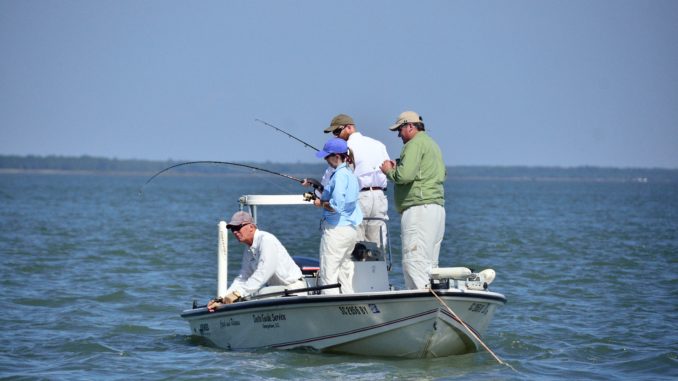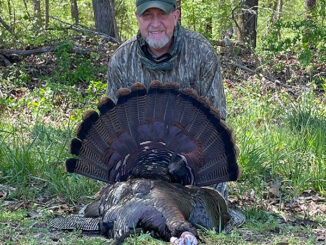
The channel from the city of Georgetown towards the ocean is well known by local boaters to have significant current flow. During strong tidal sequences around the full and new moons, the currents can be as swift as five to seven knots, and these currents can have a dramatic impact on keeping your boat situated and determining the success of a giant red drum trip.
Even though the water may be 25 to 35 feet deep, it is the first several feet along the bottom that marks the critical zone for fishing and catching big reds. Concentrations of big fish will along the bottom and feed on anything passing by within reach. When anglers locate a prime fishing spot around a depth change near a hump or channel ledge, anchoring will ensure constant hookups. But, the strong currents and hardbottoms associated with this area can be a problem for typical anchoring set-ups. Steve Roff of Barrier Island Guide Service prevents anchoring malfunctions with a heavy chain, stout anchor and a lot of anchor line.
“I use a six-foot section of ½-inch chain and a 13-pound anchor,” he said. “It will usually catch, but give yourself some room and put out plenty of anchor line,” he says.
The Danforth (or fluke) and the plow anchor are best suited for the conditions in the channel in heavy current situations, but sufficient anchor line must be deployed. As a general rule, six feet of anchor line should be deployed for every foot of water depth.
The long, heavy chain will lie on the bottom and allow the anchor to set into place. Longer sections of chain up to eight feet can be used to improve anchor sets.
When preparing to anchor in a specified location, boaters must deploy the anchor, chain and line well upcurrent of the intended location. And don’t try setting the anchor line until all of the line is deployed overboard.





Be the first to comment